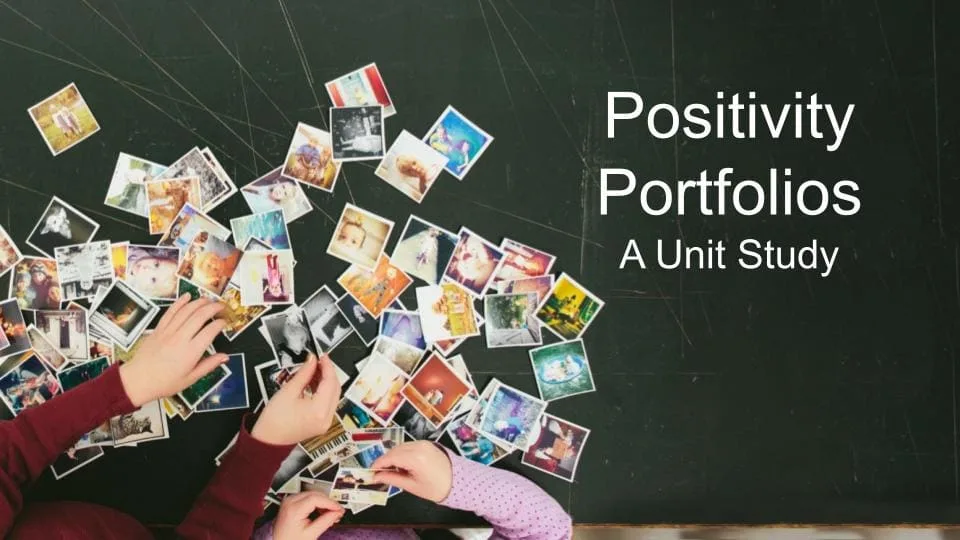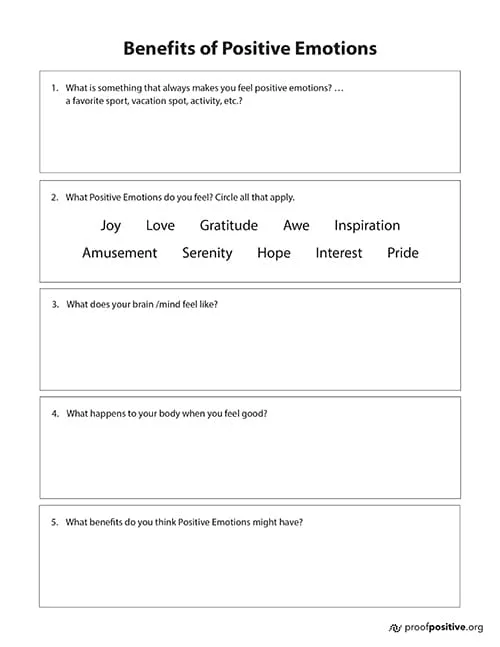TEACH Positivity Portfolios
Explore the intersection of positive psychology and autism intervention by teaching your students how to create a portfolio of items that induce positive emotions.
Start Teaching!
This comprehensive bundle comes with everything you need to bring Positivity Portfolios into the classroom, from teaching slides and notes to supplementary resources.
Teaching Resources
Lesson Plans & Teaching Materials
- Objectives (PDF)
- Teaching Slides — All Activities (Google Slides)
- Teacher’s Guide (Google Slides, PDF)
- Teacher Answer Key (PDF)
- Unit Study Bundle Pack — All Activities (PDF)
Behavior Intervention Plans (BIPs) are more than just behavior supports – they’re pathways to learning and success. By prioritizing wellbeing and happiness in BIPs, you can help create structure and consistency while also making space for joy, connection and resilience. With the right supports in place, students can feel empowered, successful and experience more happiness at school.
- As a proactive strategy for reducing behavior, ensure that the student and support staff are familiar with which positive emotions are most important and beneficial to the student. Include proactive breaks to experience those positive emotions throughout the day.
- Have the student keep a Positivity Portfolio picture album with them at all times. When the student needs to de-escalate, try having them savor their Positivity Portfolio album.
- Develop a data collection procedure to track the frequency and duration of experiences of positive emotions. Work as a team to develop observational guides for positive emotions. How will you know the student is experiencing joy or love? Once defined, add a section to their data sheet to ensure you are tracking and targeting increased experiences of positivity.
- For students that have identified preferred teachers/staff in the building, have them identify which positive emotions they experience with that individual. Develop strategies to explore that emotion through a Positivity Portfolio as a transition skill, or in the absence of a preferred person being available.
- Embed the Positivity Portfolio into transitions for students who are learning to transition smoothly. Introduce a Positivity Portfolio Pause either at the beginning or end of the transition. Allow them 1-3 minutes to flip through their portfolio to increase the likelihood of a smooth transition.
Individualized Education Plans (IEPs) ensure every student has access to the supports they need to thrive. When happiness and wellbeing is included and prioritized in IEPs, students are more likely to flourish in learning and in life. By shifting from a deficit-based approach to one of strengths and potential, IEPs can open doors to learning, connection and joy – at school and beyond.
- When students are preparing for their upcoming IEP meeting, have them reflect on times they experienced each (or some) of the positive emotions over the past year. Turn this reflection into a Positivity Portfolio presentation for them to share at the opening of the meeting. They can walk the team and their family through their favorite moments from the past year and what emotions they felt.
- Ensure that every IEP includes at least one goal that is related to enhancing experience of Positive Emotions.
Examples
- The student will learn to identify, define and differentiate the big 10 positive emotions in pictures, movies and/or their own experiences.
- The student will learn to initiate interactions with preferred peers that allow for time engaging in shared interests and amusement (e.g., invite a peer to play a shared favorite video game or talk about a favorite movie).
- The student will learn to collect and savor positive memories in the form of a Positivity Portfolio (e.g., in a box, PPT slides, or photo album).
Bringing wellbeing to the forefront doesn’t require a complete overhaul of your classroom routine. By integrating happiness skills into what you’re already teaching, you can help students learn and practice happiness in simple, meaningful ways. From morning meetings and check-ins to reading, writing, and relationship-building, there are countless ways to make wellbeing part of everyday learning.
- For students who are working on navigational skills (walking the halls of the school independently), develop a Positivity Portfolio map where they walk the school and identify which areas trigger specific positive emotions (e.g., a favorite classroom brings them joy, a bulletin board that sparks interest, the gym which inspires hope or pride) for them. Encourage them to use these markers as landmarks when they are navigating to class.
- For a student working on tech skills (e.g., PowerPoint, Word, or Zoom), have them create their Positivity Portfolio on a tech based platform and learn to master tech skills in the presence of positivity.
- For students who create a daily activity schedule, start the day by having them map emotions to each schedule cue and then savor the cues that bring positive emotions.
- Teachers might create a “Positivity Portfolio” savoring cue in their classrooms and create space for all students to savor their portfolios regularly. The cue could be a specific song they play when it’s time to practice Positivity Portfolios or a cue card they hold up for the class. Create space for the regular practice of Positivity Portfolio savoring.
Classroom Activities
Each activity includes teacher notes and differentiated instruction across skill levels
- Activity 1: Introduction to Positive Emotions
30-45 Minutes / Google Slides + Teacher Notes / Student Worksheets (PDF) - Activity 2: Benefits of Positive Emotions
20-30 Minutes / Google Slides + Teacher Notes / Student Worksheets (PDF) - Activity 3: Building Positivity Portfolios
20-30 Minutes / Google Slides + Teacher Notes / Student Worksheets (PDF) - Activity 4: Savoring Positivity Portfolios
20-30 Minutes / Google Slides + Teacher Notes - Activity 5: Sharing Positivity Portfolios
30-45 Minutes / Google Slides + Teacher Notes - Unit Study Bundle Pack — All Activities (PDF)
Printable Worksheets & Individual Activities
- Get to Know the 10 Positive Emotions (PDF)
- Build a Positivity Portfolio (PDF)
- Savor a Positivity Portfolio (PDF)
- Positivity Portfolios for Greater Connection (PDF)
- Scheduling for Positivity (PDF)
- Positivity Portfolio Board (PDF)
- Positivity Portfolio in your Newsletter (PDF)
- Emotions Game (PDF)
- My Emotional Brain (PDF)
- Benefits of Positive Emotions (PDF)
- Build a Positivity Portfolio (PDF)


